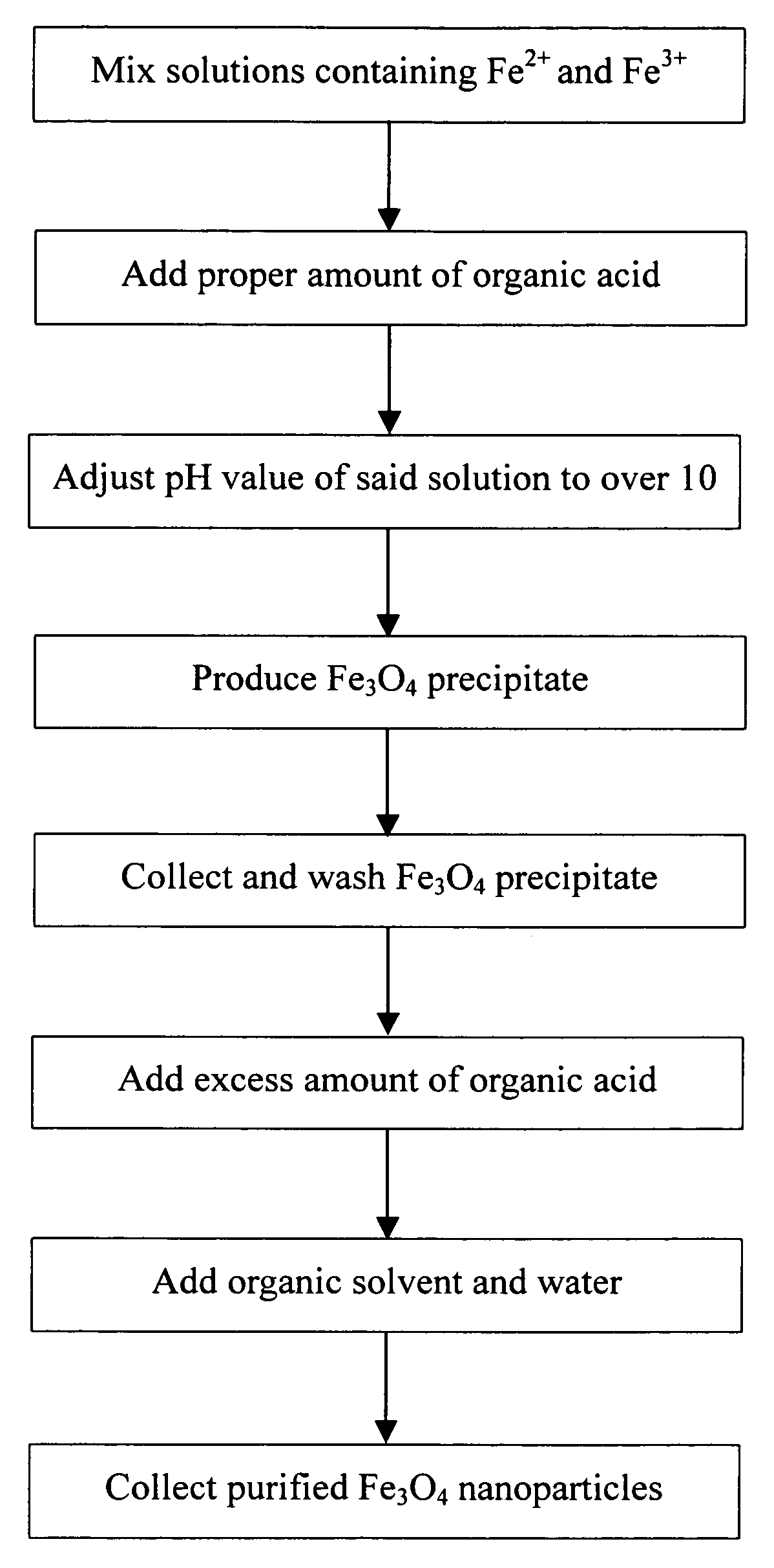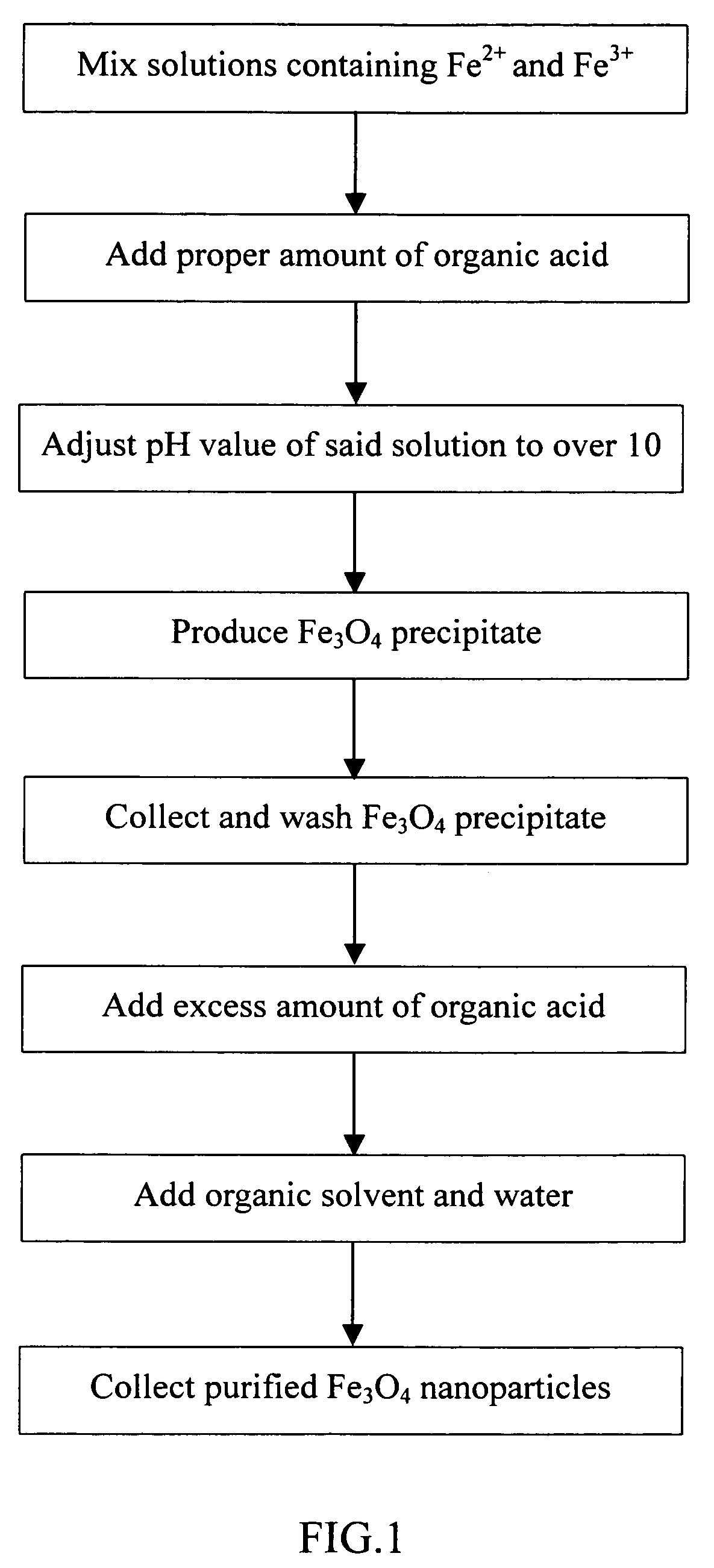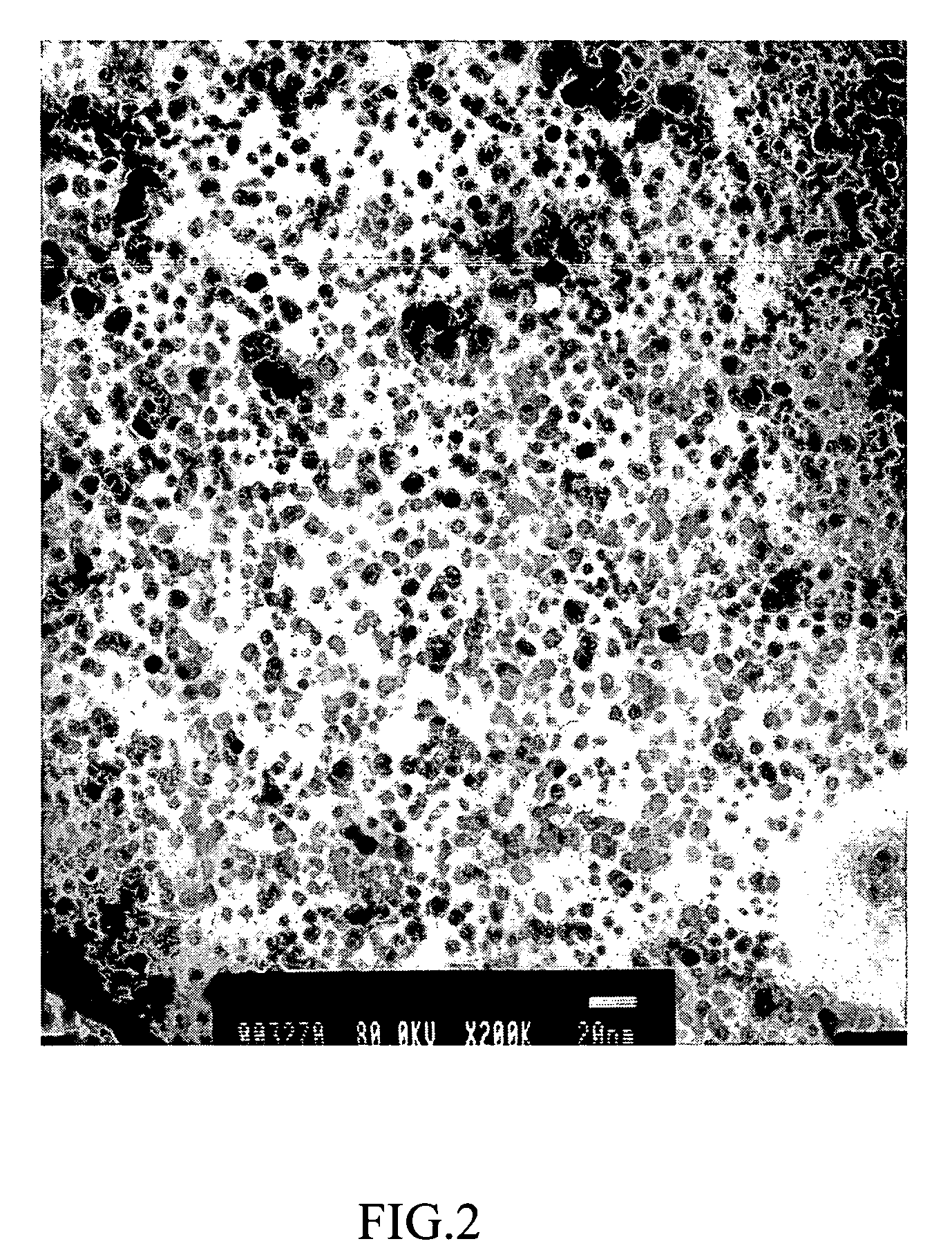Method for preparation of water-soluble and dispersed iron oxide nanoparticles and application thereof
a technology of dispersed iron oxide and nanoparticles, which is applied in the field of preparation of water-soluble and dispersed iron oxide nanoparticles, can solve the problems of unstable magnetic field and adverse health effects, and achieve the effect of easy binding of biomolecules and drugs
- Summary
- Abstract
- Description
- Claims
- Application Information
AI Technical Summary
Benefits of technology
Problems solved by technology
Method used
Image
Examples
example 1
Preparation of Water-Soluble Fe3O4 Nanoparticles
[0026] First mix 0.2 M FeCl2 and 0.1 M FeCl3 in 2 M HCl solution at the volume ratio of 1:4 (FeCl2: FeCl3), then add 1 g of glycine (preferably 0.5˜1.5 g); slowly drip 5 M NaOH solution into the mixture to adjust its pH to over 10 to provide an alkaline environment for Fe3O4 in the solution to precipitate; next agitate for 10 minutes, then wash with D.I. water several times to collect the black precipitate (Fe3O4); next add 3 g of glycine as adherent; agitate 10‥15 minutes and then vibrate for 30 minutes to let the adherent cover the surface of Fe3O4 nanoparticles entirely; subsequently add obtained Fe3O4 nanoparticles to acetone and water mixture to remove excess organic acid adherent; centrifuge at 8000 rpm for 20 minutes to precipitate the Fe3O4 nanoparticles to obtain water-soluble and dispersed Fe3O4 nanoparticles disclosed in the invention. FIG. 2 shows the electron microscope image of resulting Fe3O4 nanoparticles dissolved in ...
example 2
Using Fe3O4 Nanoparticles as MRI Contrast Agent—Injected in Liver
[0027] In this example, Fe3O4 nanoparticles prepared in Example 1 were used as MRI contrast agent. The contrast agent was prepared by dissolving the Fe3O4 nanoparticles in D. I. water, and if necessary, adding to it proper amount of serum or similar body fluid.
[0028]FIG. 3A shows the MRI scan before Fe3O4 nanoparticles were injected into the liver; FIG. 3B shows the MRI scan after the liver was injected with 0.86 μM Fe3O4 nanoparticles. By comparing where the arrows are pointed at in FIGS. 3A and 3B, it is clearly shown that Fe3O4 nanoparticles indeed entered the liver to provide the contrast enhancement effect.
example 3
Using Fe3O4 Nanoparticles as MRI Contrast Agent—Injected in Kidney
[0029] In this example, Fe3O4 nanoparticles as described in Example 2 were used as MRI contrast agent and injected in kidney to observe its enhancement effect.
[0030]FIG. 4A shows the MRI scan before Fe3O4 nanoparticles were injected into the kidney; FIG. 4B shows the MRI scan after the kidney was injected with 0.86 μM Fe3O4 nanoparticles. By comparing where the arrows are pointed at in FIGS. 4A and 4B, it is clearly shown that Fe3O4 nanoparticles indeed entered the kidney to provide the contrast enhancement effect.
PUM
 Login to View More
Login to View More Abstract
Description
Claims
Application Information
 Login to View More
Login to View More - R&D
- Intellectual Property
- Life Sciences
- Materials
- Tech Scout
- Unparalleled Data Quality
- Higher Quality Content
- 60% Fewer Hallucinations
Browse by: Latest US Patents, China's latest patents, Technical Efficacy Thesaurus, Application Domain, Technology Topic, Popular Technical Reports.
© 2025 PatSnap. All rights reserved.Legal|Privacy policy|Modern Slavery Act Transparency Statement|Sitemap|About US| Contact US: help@patsnap.com



